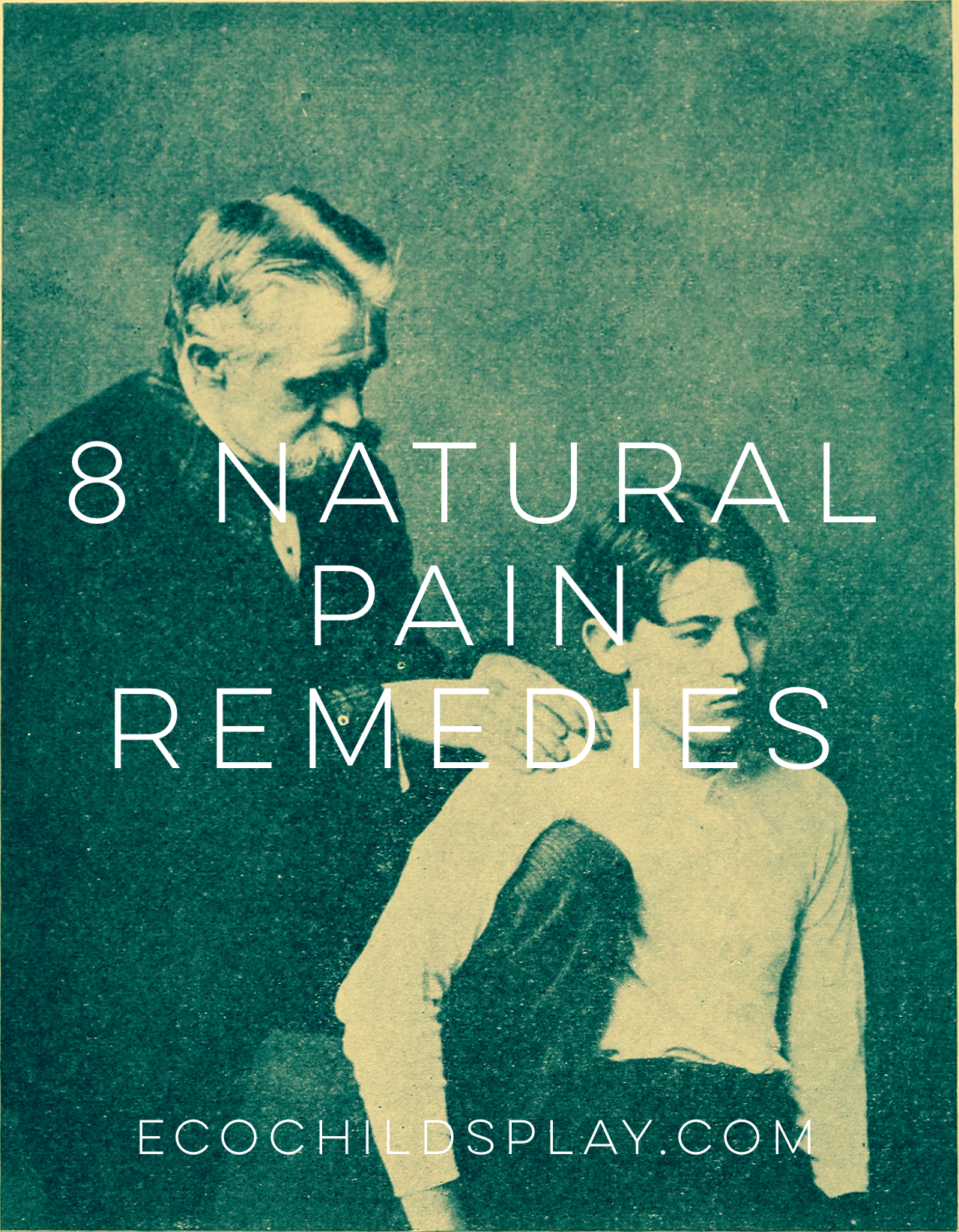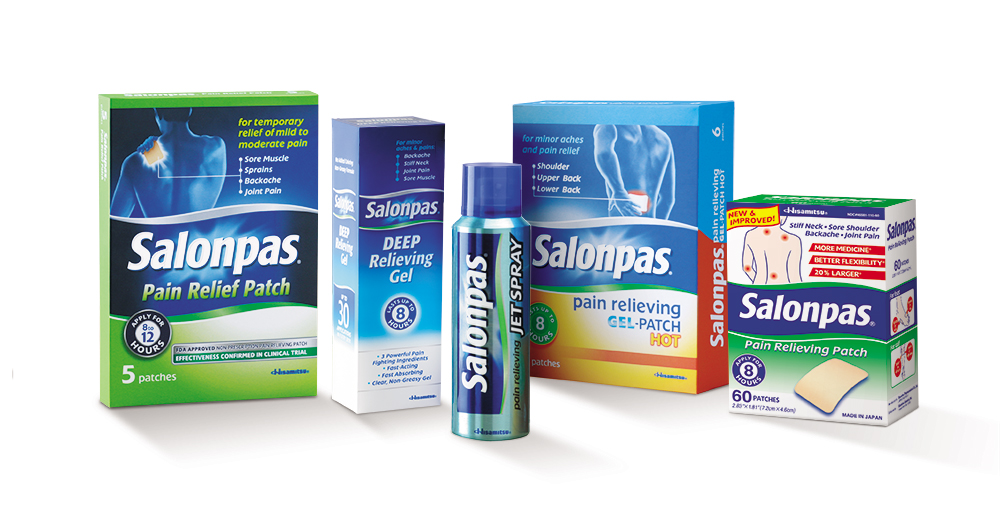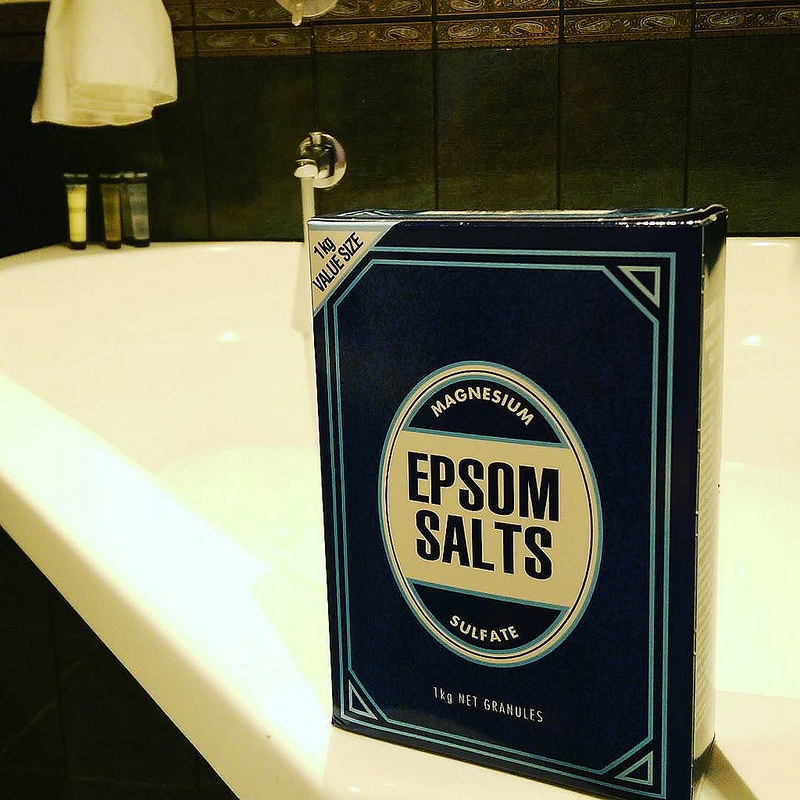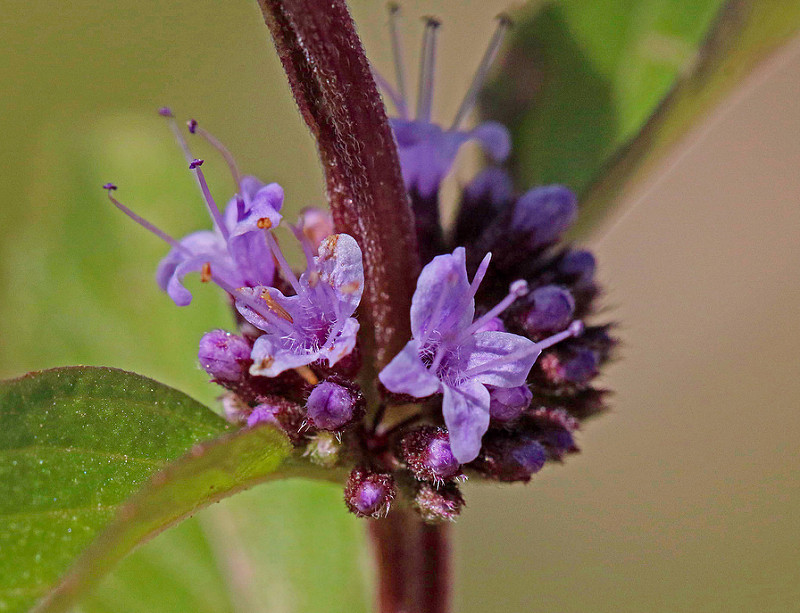 Whether you suffer from arthritis, joint, or muscular pain, sometimes you need relief. Prescription drugs have their place in acute and chronic pain management, yet they are highly addictive and overused. Natural pain remedies are effective and typically safe to use long-term.
Whether you suffer from arthritis, joint, or muscular pain, sometimes you need relief. Prescription drugs have their place in acute and chronic pain management, yet they are highly addictive and overused. Natural pain remedies are effective and typically safe to use long-term.
Photo credit: Internet Archive Book Images via Foter.com / No known copyright restrictions
I actually enjoy the feeling of sore muscles. I like knowing I have exercised my body gaining strength and flexibility. I don’t like the pain associated with injury and arthritis. Sometimes pain is just too much! When it affects your sleep and mood, you need relief. Here are eight ways I find relief naturally from pain.
8 Natural Pain Remedies
Photo credit: Nick Cheney via Foter.com / CC BY-NC-ND
1. Hot bath with epsom salts
I am addicted to hot baths with epsom salts. It is one of the natural pain remedies I practice daily.
Epsom salts are made of magnesium and sulfate. Most of us are deficient in magnesium.((http://drhyman.com/blog/2010/05/20/magnesium-the-most-powerful-relaxation-mineral-available/))
Dr. Hyman of the Cleveland Clinic explains:
Think of magnesium as the relaxation mineral. Anything that is tight, irritable, crampy, and stiff — whether it is a body part or an even a mood — is a sign of magnesium deficiency.
This critical mineral is actually responsible for over 300 enzyme reactions and is found in all of your tissues — but mainly in your bones, muscles, and brain. You must have it for your cells to make energy, for many different chemical pumps to work, to stabilize membranes, and to help muscles relax.((http://drhyman.com/blog/2010/05/20/magnesium-the-most-powerful-relaxation-mineral-available/))
Dr. Hyman recommends taking epsom salt baths. Through the bath water, we absorb the magnesium into our body. British biochemist Rosemary Waring of the University of Birmingham found 16 out of 19 people had increased magnesium in their blood after bathing in epsom salts.((https://www.painscience.com/articles/epsom-salts.php))
The Universal Health Institute explains:
The National Academy of Sciences, however, reports that most Americans are magnesium deficient, helping to account for our society’s high rate of heart disease, stroke, osteoporosis, arthritis and joint pain, digestive maladies and stress-related illnesses, chronic fatigue and a host of other ailments. The Academy estimates the average American male gets just 80% of the magnesium required for good health, while females get only 70% of their recommended levels. Nutritionists say Americans’ magnesium levels have dropped more than 50% in the past century…
Magnesium – the key component of Epsom Salt — performs more functions in more systems of the human body than virtually any other mineral, including regulating the activity of more than 325 enzymes.
Studies show that magnesium is:
- An electrolyte, helping to ensure proper muscle, nerve and enzyme function.
- Critical to the proper use of calcium in cells.
- An aid in helping to prevent heart disease and strokes by lowering blood pressure, protecting the elasticity of arteries, preventing blood clots and reducing the risk of sudden heart attack deaths.
Medical research also indicates that magnesium may:
- Increase the effectiveness of insulin, helping to lower the risk or severity of diabetes.
- Reduce inflammation and relieves pain, making it a beneficial in the treatment of sore muscles, bronchial asthma, migraine headaches and fibromyalgia.((http://www.epsomsaltcouncil.org/wp-content/uploads/2015/10/universal_health_institute_about_epsom_salt.pdf))
Photo credit: Roozbeh Rokni via Foter.com / CC BY-NC-ND
2. Roll on a tennis ball
To help release pain, you can give yourself a deep tissue massage using a tennis ball. Wherever you are tight or tender, roll the ball. You can place the ball between your body and the floor to go deeper. A wall or chair can also be handy to place between your body and the ball. For a more gentle touch, just roll the ball on the spot.
When you reach a particularly painful spot, hold for no more than ten seconds.
Pain Science explains:
Why tennis balls work for trigger points
A knot or trigger point is a clenched patch of muscle tissues. The nerve that controls the muscle is firing too quickly, and the tissue is full of waste molecules produced by the “revving” tissue.
Pressure probably has two main therapeutic effects on muscle knots: it creates a small, local stretch that tends to inhibit the motor nerve and/or separates sarcomeres to the point of breaking the vicious cycle of spasm, and it deforms the tissue and literally squashes stagnant tissue fluids out of the area.((https://www.painscience.com/articles/tennis-ball.php))
By using a tennis ball, or a harder lacrosse ball, you can give yourself a deep tissue massage. Stretching after using the tennis ball increases the benefits.((https://yogainternational.com/article/view/tennis-ball-techniques-for-tight-muscles)) I use a tennis ball as part of my daily yoga warm up.
I travel and backpack with a tennis ball to relieve any tight spots. This is especially effective for myofascial pain.
 3. Salonpas Pain Relief Patch
3. Salonpas Pain Relief Patch
My mother first introduced me to Salonpas when she had back pain. These Japanese pain relief patches use Methyl Salicylate, also known as oil of wintergreen. It can be distilled naturally or made in a lab through the “esterification of salicylic acid and methanol”.((http://www.rsc.org/chemistryworld/2015/09/methyl-salicylate-oil-wintergreen-podcast))
I am not sure if Salonpas are 100% natural, but they are effective. I have used them for back pain, as well as when my carpal tunnel syndrome flares up. I have also used them for tendonitis in my elbow.
The Wall Street Journal explains:
In Japan, it’s more common to slap on a patch than to take a pill for pain. Hisamitsu Pharmaceutical Co., maker of Salonpas patches, is Japan’s leading manufacturer of external pain-relieving drugs. Salonpas patches are available in the U.S.
Masayuki Taniguchi, 40, a former judo athlete and now a salesman of first-aid products in Tokyo, says he often used pain patches when he had strains and bruises from judo. “It gave an immediate effect to the injured part as the main ingredient goes directly through pores to capillary vessels,” Mr. Taniguchi says. He says he still uses patches for stiff shoulders or muscle aches.((http://www.wsj.com/articles/SB10001424052748703988304575413790297238042))
There is a new SalonPas patch available that is 20% larger and utilizes three ingredients: camphor (3.1%), menthol (10%) and methyl salicylate (15%). I love how the patches are long-lasting and quick acting. These patches are the ONLY FDA-approved OTC pain relief patch.
SALONPAS was first sold in 1934!
We were sent the following products to try:
- Salonpas Pain Relieving Jet Spray
- Salonpas Deep Relieving Gel
- Salonpas Pain Relieving Gel-Patch Hot
- Salonpas Pain Relieving Patch
I always recommend Salonpas to my friends that are suffering from pain, especially back pain. The patches are long-lasting and effective. They do have a minty smell, but it does not bother me. I think it smells refreshing.
I take Salonpas patches with me backpacking, in addition to my tennis ball. Although the patches promise “temporary” relief, I do believe they speed healing by relaxing the tension around pain.
The gel-patch uses capsaicin, which is an active ingredient in chili peppers. I am not a fan of aerosol sprays or gels, thus I prefer the patches.
Photo credit: michaudier via Foter.com / CC BY-NC-SA
4. Arnica
Arnica is one of my favorite homeopathic natural pain remedies. What is homeopathy?
Similasan explains:
In homeopathy, however, the dosages are not concentrated enough to poison the body. In fact, the dosage level is only enough to cause the body to detect the presence of the ingredient and then react to it. The body then reacts by triggering the immune system to heal the underlying problem…Rather than imposing a chemical drug on the body with the hope of temporarily masking symptoms, homeopathic active ingredients attempt to stimulate a physiological reaction of the body’s healing mechanisms. In other words, homeopathy encourages the body to maintain proper health by imposing a gentle stimulus.
I was first prescribed arnica by my doctor when I sprained my ankle. I did not take any prescription drugs for the pain and relied solely on natural pain remedies.
Arnica montana is a little flower that grows in the mountains. It has been in use medicinally since the 1500s. The University of Maryland Medical Center explains:
Medicinal Uses and Indications
- Arnica is used topically for a wide range of conditions, including bruises, sprains, muscle aches, wound healing, superficial phlebitis, joint pain, inflammation from insect bites, and swelling from broken bones. More recent studies suggest it may also be helpful in the treatment of burns.
- Homeopathic preparations are also used to treat sore muscles, bruises, and other conditions caused by overexertion or injury. Homeopathic doses are extremely diluted. They have no detectable amount of the plant in them and are generally considered safe for internal use when taken according to the directions on the label.((http://umm.edu/health/medical/altmed/herb/arnica))
Photo credit: kiwinky via Foter.com / CC BY-NC-ND
5. Yoga
If you Google “yoga for pain”, you will find tons of suggested poses for different areas of the body. Restorative yoga can be an especially gentle and effective at pain management.
Similar to the other natural pain remedies mentioned, gently stretching the sore parts of our bodies helps release tension. Instead of gripping and holding onto the pain, which can be our tendency, we stretch and breathe through it. Furthermore, we can stretch other parts of body connected to the pain source to prevent the soreness from traveling to adjacent parts.
Yoga addresses not only physical pain, but the mind-body connection to it. Yoga International describes:
The protective pain response begins when the body experiences some physical threat, such as a cut, a burn, or an inflamed muscle. This threat is detected by specialized nerves and sent through the spinal cord and up to the brain where, among other things, the threat signals are transformed into pain sensations. Emotion-processing areas of the brain also get the message, triggering a wide range of reactions, from fear to anger. Combined, your thoughts and emotions about the physical sensations of pain make up the suffering component of the full pain experience…
Why does past pain make you more sensitive to future pain? You can thank one of the great wonders of our nervous system: its ability to learn in response to experience. This ability is called neuroplasticity. Through the repeated experience of pain, the nervous system gets better at detecting threat and producing the protective pain response. So unfortunately, in the case of chronic pain, learning from experience and getting “better” at pain paradoxically means more pain, not less.
Both modern science and yoga share this idea: present pain and suffering have their roots in past pain, trauma, stress, loss, and illness. Modern science uses words like neuroplasticity to describe the process of learning from past experiences; yoga uses the word samskara. Samskaras are the memories of the body and mind that influence how we experience the present moment. Samskaras keep you stuck, feeling the same emotions, thinking the same thoughts, and even experiencing the same pain.((https://yogainternational.com/article/view/restorative-yoga-for-chronic-pain))
I have successfully used yoga to manage my carpal tunnel syndrome, piriformis syndrome, and arthritic hip. Without yoga, these pains return and can be debilitating.
Photo credit: jerryoldenettel via Foter.com / CC BY-NC-SA
6. Corn Mint Essential Oil
After one of my yoga teachers was in a car accident, she began using cornmint essential oil for neck pain complementing other natural pain remedies. Cornmint is also known Japanese peppermint, but it is not a true peppermint.
Cornmint is strong, and you may need to dilute it. It is high in menthol. It is very powerful. I have used it on my shoulders and elbow effectively.
Some wellness advocates think it is inferior to peppermint, but in my experience it has been very effective at relieving sore muscles. ((https://www.facebook.com/EssentialOilUniversity/posts/10153239525573083)) It’s important to find a good source, as sometimes it is sold as cheap peppermint oil after a good portion of menthol has been removed. ((http://www.aromaweb.com/essential-oils/cornmint-oil.asp))
Photo credit: Kirsty Topping via Foter.com / CC BY-ND
7. Body Work & Massage
There is nothing better than a good massage! Massage got me walking when my arthritic hip had driven me to prescription pain killers abandoning natural pain remedies.
Scientific studies have proven massage works! According to a study published in the International Journal of Therapeutic Massage and Bodywork:
Participants
Hospital inpatients (n = 53) from medical, surgical, and obstetrics units participated in the current research by each receiving one or more massage therapy sessions averaging 30 minutes each. The number of sessions received depended on the length of the hospital stay.
Result
Before massage, the mean pain level recorded by the patients was 5.18 [standard deviation (SD): 2.01]. After massage, the mean pain level was 2.33 (SD: 2.10). The observed reduction in pain was statistically significant: paired samples t52 = 12.43, r = .67, d = 1.38, p < .001. Qualitative data illustrated improvement in all areas, with the most significant areas of impact reported being overall pain level, emotional well-being, relaxation, and ability to sleep.
Conclusions
This study shows that integration of massage therapy into the acute care setting creates overall positive results in the patient’s ability to deal with the challenging physical and psychological aspects of their health condition. The study demonstrated not only significant reduction in pain levels, but also the interrelatedness of pain, relaxation, sleep, emotions, recovery, and finally, the healing process.((http://www.ncbi.nlm.nih.gov/pmc/articles/PMC3091428/))
Deep tissue and Rolfing are also highly effective natural pain remedies, although not as pleasurable as a massage. I like to follow intense Rolfing treatments with massage.
Photo credit: marniejoyce via Foter.com / CC BY
8. Acupuncture
The Harvard Medical School says acupuncture is “worth a try for chronic pain”((http://www.health.harvard.edu/blog/acupuncture-is-worth-a-try-for-chronic-pain-201304016042)). It is also effective for acute pain. My family has used it for both.
I am always amazed at how effective acupuncture is at releasing pain. After being advised I would need surgery on my wrist, I decided to try acupuncture first. Three days later, the swelling and numbness had gone away. I could brush my teeth again with my right hand! Surgery was avoided.
Acupuncture is over 3000 years old. It is one of the most extensively studied natural pain remedies. The University of California at San Diego Center for Integrative Medicine reports:
Traditional Chinese Medicine is based on an ancient philosophy that describes the universe, and the body, in terms of two opposing forces: yin and yang. When these forces are in balance, the body is healthy. Energy, called “qi” (pronounced “chee”) flows along specific pathways, called meridians, throughout the body. This constant flow of energy keeps the yin and yang forces balanced. However, if the flow of energy gets blocked, like water getting stuck behind a dam, the disruption can lead to pain, lack of function, or illness. Acupuncture therapy can release blocked qi in the body and stimulate function, evoking the body’s natural healing response through various physiological systems. Modern research has demonstrated acupuncture’s effects on the nervous system, endocrine and immune systems, cardiovascular system, and digestive system. By stimulating the body’s various systems, acupuncture can help to resolve pain, and improve sleep, digestive function, and sense of well-being.((http://cim.ucsd.edu/clinical-care/acupuncture.shtml))
I hope these natural pain remedies help you as much as they have helped my family! Remember, it is always important to seek medical attention for pain.







Leave a Reply